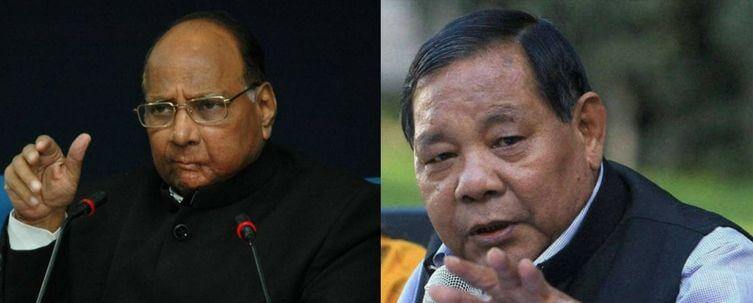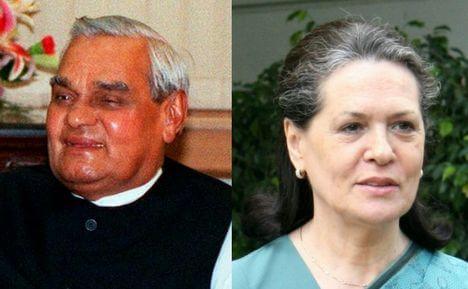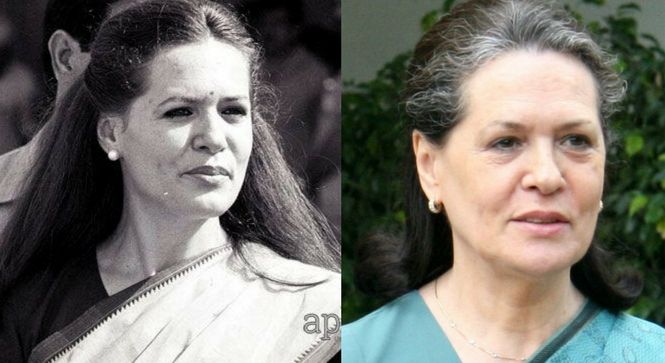Researched by Ishita Dewan
Written by Arjav Kulshreshtha
“I am the daughter-in-law of Indira Gandhi. I am not scared of anyone. I am not disturbed.”
– Sonia Gandhi
Sonia Gandhi was born in Lusiana, Italy and was the longest serving President of the Indian National Congress. She led the party for 19 rollercoaster years, reviving it from a state of limbo in 1998 to acquire national power in the 2004 elections till 2014 when they found themselves on the verge of a nation-wide collapse. Although she was criticised by her opponents as well as her own political allies, Sonia Gandhi managed to override most obstacles to prove her sceptics wrong. She was a remarkable politician who possessed an uncanny resemblance to Indira Gandhi in providing the stability and direction that the INC lacked following her mother-in-law’s untimely death.
Following Rajiv Gandhi’s assassination, Sonia Gandhi initially refused to join politics herself. Nevertheless, she decided to join the Indian National Congress in 1997. And, within 62 days of her joining, she replaced Sitaram Kesri to become the INC’s President. The biggest hurdle Sonia Gandhi faced on becoming party president was the internal discord following from many leaders threatening to resign from the Congress. There were demands for a change in leadership after the 12th Lok Sabha was dissolved, culminating in Sharad Pawar and P.A. Sangma leaving the Congress and forming the Nationalist Congress Party. Well-aware of this internal power struggle, her primary aim as party President was to reinstate the unity of India’s oldest party.

Although she belonged to one of India’s most politically influential families, Sonia Gandhi faced problems when she initially entered Indian politics. Her foreign origin, ‘strange accent’ and parliamentary inexperience were problematic for both the Congress and the public who had to accept her as a popular leader. This also equipped the BJP with everlasting fodder to question her place in Indian politics to prevent her from becoming a powerful public figure. This brought about doubts within the mind of some whether she would be able to govern the country with the same commitment as a “native born” leader would have.
Immediately upon becoming the President of the Congress, Sonia Gandhi changed the fortunes of the Congress – in 1998, the Congress won the State Legislative elections in Delhi, Madhya Pradesh and Rajasthan.
In attempting to overcome these barriers, she managed to win back the votes of the Muslims, Dalits and farmers.The image that she projected of herself one of being the daughter of ‘Bharat Ma’, and that India was her matrimonial land. Eventually, the people were able to accept her as a popular leader, with chants of ‘Sonia Gandhi kaisi hai? Indira Gandhi jaisi hai!’ [How is Sonia Gandhi? Just like Indira Gandhi!] resounding through the air at gatherings. The fact that the people accepted her, in spite of her foreign origin, is recognised by Tariq Anwar, who was one of the founders of the Nationalist Congress Party along with Pawar and Sangma. Anwar said, “When I look back at the event of 1999 and at the course of national politics till now, I am convinced our (Pawar-Sangma-Tariq trio) apprehensions about Sonia Gandhi’s foreign origin have been proven wrong. The fact is Soniaji has won the hearts of the majority of Indians who have accepted her as one among us. In that sense, we (the trio) have been proven wrong in opposing Soniaji’s leadership over her foreign origin.”
Sonia Gandhi took steps to revamp the image of the Congress. She understood the usefulness of coalition politics and tried to utilise coalition politics while contesting the 1999 General Elections. The Congress along with its coalition partners won a majority of the seats during the pre-Election.
However, under Sonia Gandhi’s leadership, the Indian National Congress witnessed its worst performance in the General Elections since independence, at the time. The Congress-led Alliance won only 156 seats, while the BJP-led National Democratic Alliance won 270 seats and formed the government at the Centre. The Congress-led alliance contested the elections in a shy, reserved manner, and the election campaign became a contest of Vajpayee vs Sonia Gandhi as both parties preferred to project the image of the two leaders rather than the party itself. However, Sonia Gandhi’s ascension to the Presidency of the party lost some legitimacy and force due to attacks by Sharad Pawar, and the internal bickering regarding her foreign origins.
This internal party conflict and poor campaigning can be attributed to Sonia Gandhi’s lack of political experience. Sonia Gandhi was not able to successfully unify the Congress before the elections and unable to present the party as a reliable and stable alternative that the public had craved. This is a failure on part of her leadership and subsequently, the Congress lost the election. Initially, she was not an effective parliamentarian due to her lack of experience in Parliament, her foreign accent, fumbling words, and Christian faith. What she lacked in experience, Sonia Gandhi made up for in political maturity — she was equipped to quickly bring about serious political challenges to the BJP.
Turbulence as Leader of Opposition
As Leader of Opposition, Gandhi successfully kept the incumbent government on its toes throughout her tenure. While the BJP rejoiced the success of the Pokhran Missile test as a display of the country’s strength, she questioned their brazen celebration of power by saying that “Real strength lies in restraint, not in the display of shakti.” Later, in the aftermath of the Godhra riots, Sonia Gandhi masterfully executed a censure motion which pushed the Vajpayee government into announcing a ₹15 crore package for Gujarat. She even brought about a motion in 2000 that called for Atal Bihari Vajpayee to expel L.K. Advani, M.M. Joshi, and Uma Bharti from the Government because of their direct involvement in the Ayodhya-Babri Masjid Demolition issue.
Then, in 2003, in response to a series of scams that took place in the BJP government (such as the petroleum scam, coffin scam and UTI scam), Sonia Gandhi introduced a no-confidence motion against the Vajpayee government claiming that the government had lost the mandate of the people. When the house debated her demand for fresh elections to be held, she delivered an impactful speech that left Advani (then Home Minister) and George Fernandes (then Defence Minister) stunned in silence.

But during the Kargil War, Sonia Gandhi was lax in her role as Leader of Opposition, allowing the government to function with their power unchecked. The NDA government misused the CBI due to the Congress’ defensive stance. There was a rift between the Opposition and the Government because the former wanted to be consulted on every decision before it was taken. The Congress did not want the BJP to receive all the triumph for the Kargil War.
Sonia Gandhi did what any capable Leader of Opposition would do – she criticised the government whenever she could, furthered the cause of her own party, and tried to build her party as the viable alternative to the incumbent government. She was shrewd when it came to enacting motions against the Vajpayee government, a skill that not all her predecessors possessed. She countered the government; for example, she countered the BJP’s India Shining campaign in 2004 by asking “who is India shining for?” and instead presented herself as the party of the Aam Aadmi.
Supreme Sacrifice or Shrewd Disposition for Politics?
During the 2004 General Elections, under Sonia Gandhi, the Congress countered BJP’s ‘India Shining’ campaign with the slogan ‘Aam Aadmi’. In 2004, the Congress-led United Progressive Alliance (UPA) came to power at the Centre, and Sonia Gandhi was widely touted to become the next Prime Minister. However, due to the BJP’s attacks regarding her foreign origin, she decided to make Manmohan Singh Prime Minister instead. It was largely believed, due to her massive popularity, that Manmohan Singh was merely a puppet.
Consequently, she was elected to the 14th Lok Sabha from the Rae Bareilly constituency. As chairperson of both the UPA and the National Advisory Committee, she was instrumental in enacting the Right to Information (RTI) Act and the National Rural Employment Guarantee (NREGA) Scheme.
As a political figure, Sonia Gandhi often created controversial divisions of opinion — a salient discussion being whether the chairperson of the National Advisory Council was an office of profit. Speculation had spread that the government was going to promulgate an ordinance wherein the position in question would not be considered to be an office of profit. She resigned on 23rd March 2006 from the Lok Sabha and as chairperson of the National Advisory Council (NAC). Although the NAC was not responsible to any governmental body and was set up as an advisory body, she chose to resign and wait for the controversy to be resolved rather than cling onto political power as many other politicians have chosen to do in the past.
But come May 2006, Gandhi was re-elected from Rae Bareilly by a margin of more than 400,000 votes.
These instances in her political career indicate that she won popular support that withstood tumultuous times through allegations of corruption
Sonia Gandhi had a strong belief in true secularism. She used the BJP’s Hindutva politics and their involvement with the Ayodhya issue to launch attacks. Having been born and raised as a Christian, she was able to transcend the caste and religion politics and garner dalit as well as Muslim votes. Her style of politics focused more on her personality and not her identity. According to Sonia Gandhi, the Congress would be able to guarantee a pluralistic society and could be the catalyst necessary for resolving India’s long-standing plague of communalism. N. I. Sarkar claimed that she was a staunch believer in the ethos of transparency and clean politics. She did not have any hidden agenda and believed that a party once elected to power must work towards the betterment of the people. The fact that she was instrumental in enacting the RTI Act and actually resigned from her seat during the office-of-profit conspiracy lends merit to this claim.
The Congress party witnessed its worst electoral performance since independence during the 2014 General Elections, winning only 44 seats. After the result came out, Gandhi offered to resign from her post as party president. This caused another cleavage between the ‘old guard’ — that blamed Rahul Gandhi and his advisers for the massive defeat — and the ‘young guard’ which attributed the root cause of the defeat to the party’s failure to introduce radical internal reforms.
It is no mean feat that Sonia Gandhi was the longest serving President of the Congress. She managed to keep the Congress united and made a major impact on Indian politics. Prior to Rahul Gandhi’s ascent to the presidency, Sitaram Yechury said that “Sonia is the glue that binds the opposition.” True, her stickiness attracted its fair share of controversies and problems, but she continued as an authoritative and efficient leader — one that the Congress had been missing since Indira Gandhi.
But one cannot ignore her shortcomings while recounting her legacy. The Congress was decimated in 2014 under her leadership and has been struggling to remain relevant and continue to be a major player in Indian politics. She was unable to successfully mount an opposition to the BJP and has not been the same powerful figure that she had been in the past. Her performance in recent years will, however, not change the fact that she was extremely successful when it came to coalition politics. She managed to lead an alliance consisting of 15 different political parties to two full terms of government. That she was an effective and masterful Leader of Opposition during the tenure of Atal Bihari Vajpayee’s government coupled with her revival of Congress’ political fortunes in regional and national politics means that Rahul Gandhi has large shoes to fill. The ball is in motion, and the Congress has now been placed as the party for the people and as the secular alternative to the BJP’s saffron antics. It will be interesting to see how Rahul Gandhi leads the party as the successor of such an influential political persona.
Featured image courtesy APherald and Wikimedia Commons
References:
- Weinraub, Bernard (24 May 1991). “Assassination In India; Sonia Gandhi Declines Invitation To Assume Husband’s Party Post”
- “Sonia Gandhi re-elected Congress President“
- “Sonia Gandhi Biography”
- “Fourth time in a row, Sonia Gandhi is Congress chief”
- Robinson, Simon, “India’s Most Influential“
- “Sonia: and yet so far”
- “Profile: Sonia Gandhi“
- “On being foreign and being nationalist”. Chennai, India: Frontline Magazine. 22 May – 4 June 1999. Retrieved 2 February 2010.
- “End of the longest regency“
- Ramaseshan, Radhika (30 August 2002). “BJP sees Gujarat ammo in Sonia origins“. The Telegraph. Calcutta, India
- Manoj, CL (13 October 2017). “The Sonia Gandhi years and what Rahul Gandhi can learn“
- Riedel, Bruce (24 June 2012). “Sonia Gandhi Health Mystery Sets India Leadership Adrift“
- Sonia: A Biography by Rasheed Kidwai
- Sura’s Sonia Gandhi: The Unfolding Scenario by P.C. Ganesan
- Gupta, Harish (1 June 1998), “Jai Shri Bomb!”
- Khare, Harish (20 August 2003), “Govt. defeats no-confidence motion by a big margin”






